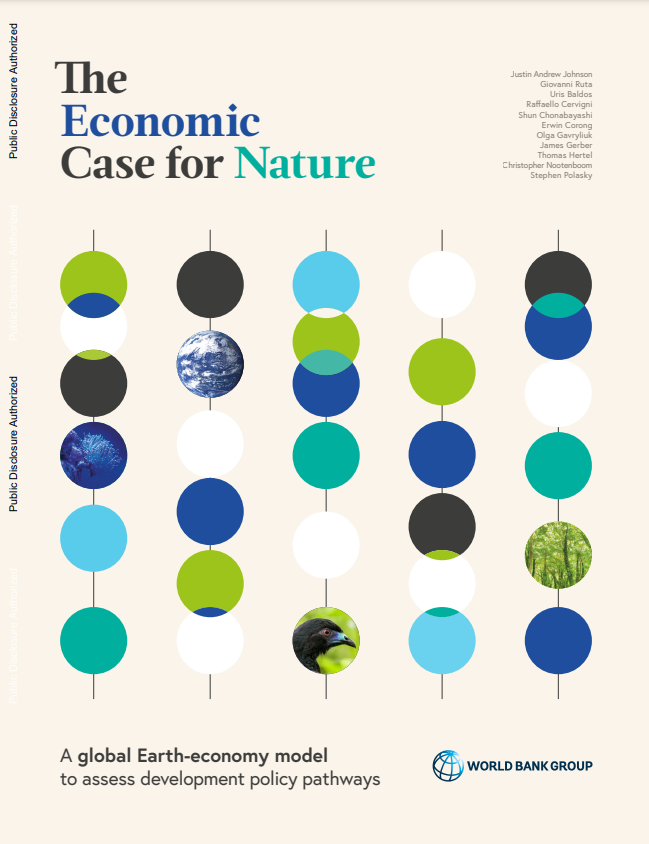Author: Alex Cooper
Date: 16 January 2023
Human-induced species extinction and the resulting decline in biodiversity threatens the economic and financial systems on which we rely. Changing investment flows to align with and drive a nature-compatible financial system is a necessity – and we are now starting to see the required tools emerge.
International Biodiversity Goals. The end of 2022 saw the signing of the Global Biodiversity Framework, a landmark international agreement, at COP 15. The Framework sets a target of protecting and restoring 30% of the world’s land and sea by 2030, and calls for an increase in domestic, international, public and private finance to implement national biodiversity strategies and action plans, including mobilising at least USD 200 billion per year by 2030. Specific targets in the Framework require governments to integrate biodiversity into policies and regulations, align financial flows with the framework’s goals and require large and transnational companies and financial institutions to disclose their risks, dependencies and impacts on biodiversity, including through value chains and portfolios.
International consensus on biodiversity risk. Financial institutions’ understanding of the impacts of biodiversity loss is rapidly evolving, and biodiversity loss has been recognised as a material financial risk by entities including the World Bank, the World Economic Forum and the Network for Greening the Financial System.
Against this background, it is clear that financial entities need to consider how biodiversity risks could impact their investments, and how to use their investments to support biodiversity.
Biodiversity loss poses significant risks to investments, which are becoming increasingly evident. In our report on biodiversity risk and its impacts on companies, we discuss how biodiversity loss can disrupt companies’ business models; in particular in exposed sectors such as agriculture and construction, but also with knock-on effects to companies in other sectors through disruption to supply chains.
Disruption to companies means disruption to investments. Studies undertaken by central banks in the Netherlands, Malaysia, France and Brazil have found their national financial sectors to have high levels of exposure to companies that are highly or very highly dependent on one or more ecosystem services. Investments also drive biodiversity loss; BNP Paribas Asset Management has measured its biodiversity footprint and found that its investments potentially maintain a fully degraded area equivalent to five times the size of London each year.
New integrated climate and nature scenario analysis fills a crucial gap, providing investors with an exploratory forward-looking view to support robust risk assessments. Transition risks – risks arising from social, political and legal changes in response to biodiversity loss – are beginning to emerge. In January 2023, the UN Principles for Responsible Investment updated its Forecast Policy Scenario (its current assessment of expected future policy developments and the subsequent impact on emissions reduction and temperature outcomes) with a forecast for nature policies. It forecasts that policy action to achieve the COP15 commitments could create new risks for companies and investors, but also sees the emergence of nature-related goods, services and financial assets emerge as a new source of economic and financial value.
Investors are beginning to demand more action from their investee companies. In December 2022, Storebrand Asset Management, a Norwegian investor, removed five mining companies from its portfolio on the basis that they did not meet the standards of the investor’s new policy on nature. Storebrand also urged companies to set biodiversity targets, and assess and reduce their negative impacts. Pictet Asset Management uses the Planetary Boundary framework to assess the environmental impact of investments. Aviva’s first biodiversity report describes how it is undertaking a biodiversity risk assessment of its investments and engaging with investee companies on biodiversity issues.
We have already begun to see the emergence of biodiversity-related financial products, similarly to the development of climate-related bonds. As well as being integrated into sustainability-linked bonds and carbon credits schemes, asset classes aiming to financially value nature are starting to enter the marketplace. The New York Stock Exchange has begun listing natural asset companies, a new asset class based on ecosystem services that capture the intrinsic and productive value of nature within natural assets (for example forests, wetlands and coral reefs). Similarly, the Bailiwick of Guernsey has become the first jurisdiction in the world to offer a classification of Natural Capital Funds, which aim to make a positive contribution, or significantly reduce harm, to the natural world.
What does this emerging landscape mean for investors’ fiduciary duties? The recognition of climate change, and other ESG factors, as being material financial risks led to investors being required to integrate such risks into their analysis, or risk breaching their fiduciary duties – in some cases, investors may even be required to go further, and seek to mitigate these risks via their investments. As biodiversity loss is increasingly recognised in the same way, investors should expect their legal obligations to include biodiversity loss. Blackrock, the world’s largest investor, bases its approach to biodiversity on its role as a fiduciary to clients, looks to companies to provide disclosures of biodiversity impacts and dependencies, and engages with companies to assess their approach to managing natural capital risks and opportunities that are material to their businesses.
Where financial institutions fail to consider biodiversity, they may expose themselves to the risk of litigation. For example, in Australia, a potential claim has been indicated against ANZ Bank on the grounds that its directors’ report does not disclose the financial materiality of biodiversity loss and describe how exposure to biodiversity risk is managed, as required by Australia’s Corporations Act.

